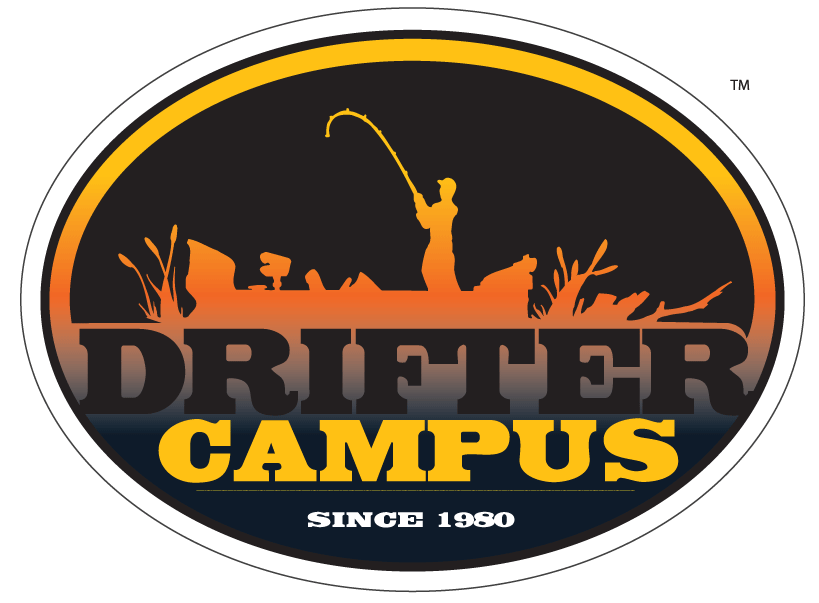Hi folks. It’s August as I sit here typing this, and I’m reflecting on a three day Lake of the Woods trip my wife and I just completed. I decided that what we did on this particular trip, and why, might be interesting and a little thought provoking. So here’s a summary.
We caught 9 fish over 40 inches. Okay, I agree, hardly newsworthy, unless you consider the following facts:
1. The trip was past the July prime time period for casting.
2. It was in an area of the lake I knew only slightly and which I had always though to have a low population of muskies.
3. Much as I like to roam, we spent all of our time in about a 2-3 square mile area.
4.The average fish size was impressive. Among the 9 were (approximate sizes here) 46, 47, 48 and a 49 inch fish, plus a 30 inch walleye (caught on a 10″Jake), and the biggest pike for me ever, on a Pacemaker surface bait.
To understand why we did what we did, I have to go back to last winter and early spring, and an internet discussion on Baystore Resort’s message board. A group of guys were planning their first trip to Lake of the Woods and had many good questions about where, how, etc. Doug Johnson, Frank Walsh, and I, plus several others, suggested things like avoiding ‘marked maps,’ focusing on a smaller section of the lake and really picking it apart, and limiting their bait selections to a few basics. Most of them took our advice, and WOW. Many fish. Big fish. Over half the group set personal bests I think. I was impressed, and my wife and I decided to practice what I had preached to see what would happen. I’m still smiling.
What did we do? Nothing profound really, just a little thinking beforehand, and exercising some self control on the water.
We started by studying the map thoroughly. Of course the obvious, such as likely points, reefs, saddles, etc.-the classic elements of Shield water structure-were noted, but considering the time of year and the fact the lake was down approximately 4 feet from the previous year, we also looked for shallow rock flats that probably weren’t fish magnets in normal years.
Being a current buff (some would say ‘freak’ is more accurate), I also looked for likely natural current areas and particularly for necks downs, bends and points that would likely be influenced by wind induced current.
Finally, again knowing the lake level was way down and that water temperatures were up, I thought about areas that were so shallow the fish may have relocated to adjacent structure. All this study seemed to pay off.
Then, because of self-imposed area limitations, we were able to check out every, yes every, likely spot. That thoroughness paid off as well. We went slowly and methodically over all likely structure in the area and now not only know a new area like the back of our hands but have what I suspect are a half dozen golden ‘spots on the spot.’ A couple of these prime spots were total surprises-spots that didn’t appear on the map at all. ‘Priceless’ as the ad says!
Presentation? Again nothing fancy. Here’s a brief fish by fish breakdown:
49 incher: 10 inch Jake thrown over a shallow rock ledge near a deep cut in a wind induced current neck.
48 incher: Grinder spinnerbait in heavy weeds (interestingly, only weed fish caught.)
47 incher: Pacemaker surface bait on a windswept point.
46 incher: Topraider surface bait in a rock saddle at dark, with a slight chop.
43 incher: Slam’er ‘Slo Mo’ surface bait in calm conditions over shallow rocks.
41 incher: Pearson prototype surface bait over shallow rocks.
41 incher: Lilytail bucktail over shallow rocks.
40 incher: Baby Jerko over shallow rocks.
40 incher: Pacemaker on windswept point.
That’s the trip. Might there be a message or two here for you? I hope so. At least this may give you a few things to ponder when planning for next year.
Okay. Now a little weirdness-as usual.
Pauses during lure retrieves have interested me since I was a kid. I can remember wading for largemouth bass, hurling an Arbogast Hula Popper as far as my Pflueger Supreme reel and metal or solid glass rod would allow, anxious to give the twitch that generated the loud pop, but really waiting for the pause, that magical sliver of time that usually provoked the strike. Even today, I relish the pause when twitching a stickbait for smallmouth.
But what about muskies? Do pauses work? Don’t we have to keep it moving for them? Moving fast? Am I nuts to even think about this stuff? (Hold that answer please.)
Seriously, I think we should think about it a little more. Further, I think we should play around with pauses a little more. Actually much more. Longer pauses too. Like the ‘secret’ technique some guys now use with crankbaits such as the neutrally buoyant Triple D-pauses near a retrieve’s end that may last for 10 or even 15 seconds before that rotator cuff tearing strike.
Lets back up a second and look at many retrieves. What about jerk baits? Whether dive and raise baits or gliders, guess what they have in common? Pauses. Twitch baits? Pauses. Jigs? Pauses. Ditto some surface baits and now with Llungens ‘drop’ bucktail, you can even sort of pause that. Spinnerbaits? Heck, I submit that fluttering/helicoptering that bait into pockets within cover is a form of pausing.
My point is simple: I’m convinced pauses are effective in provoking strikes and maybe we ought to slow down and pause more often.
I’ll end, but before I do, one more thought on pauses, and trolling time for the big fatties. Some, occasionally myself, throttle back occasionally while trolling, but maybe complete pauses during trolling runs should be explored. Certainly seems so to me with neutrally buoyant baits but maybe even more so with floaters that slowly rise to the surface? Detecting strikes may be tough but at least they struck. Would pauses make even more sense in cold water temps?
Let me know. I’m going hunting. Happy Holidays!
Remember: thinking is just being thoughtful. See you next issue.
Dick







